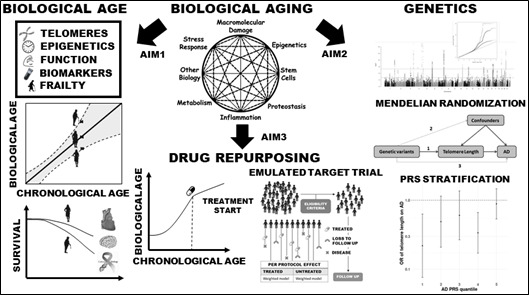Our research
Our research focus is aging epidemiology using genetic, molecular and registry data to study biological aging and the association with age-related traits.
The data we work on come from the Swedish Twin Registry, Swedish National registers, Swedish population-based cohorts (LifeGene, EpiHealth), UK Biobank, clinical hospital data and using National Infrastructures (NEAR, SIMPLER) among other samples.


